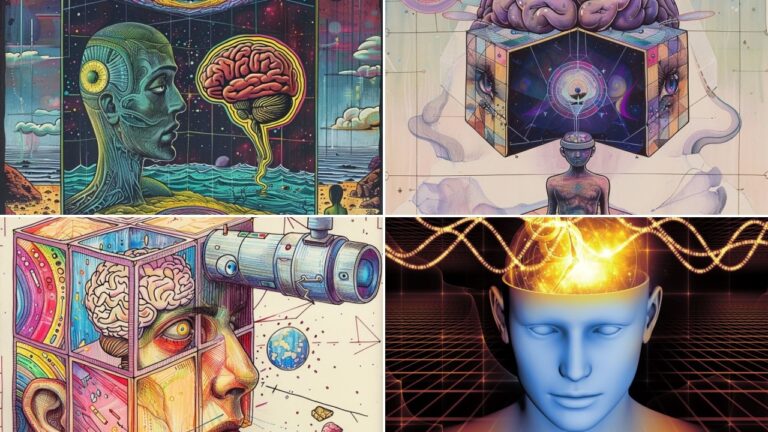Collaboration, Consciousness and Diversity
Wisdom from Prakṛti (Nature)
Human beings have to collaborate to achieve great things. The greater the significance of the endeavor, the more there is need for effective collaboration. A deep analysis of natural ecosystems operates reveals that collaboration is not just a practical necessity but a spiritual act—an alignment with the ekatā (unity) underlying vaividhya. By respecting svabhāvas, integrating svadharmas, and working with mutual respect, we design systems that radiate brilliance.
Truth—Satya—is akin to the blazing light of a billion suns, unfathomable in its entirety. Each being and system reflects but a single ray of this cosmic brilliance. As Trika Shaivism reveals, the universe is the dynamic play of Chaitanya (Consciousness), where every manifestation has its role in the grand cosmic puzzle. Within this framework, vaividhya (diversity) is not merely a feature but a sacred necessity. It allows the harmonious coexistence of various svabhāvas (intrinsic natures) and svadharmas (individual duties), forming the bedrock of collaboration and system design.
The Design of Prakṛti: Strengths, Tradeoffs, and Harmony
In prakṛti (nature), every entity is a testament to the principle of yukta-kārya (purposeful design). The siṃha (lion), king of the land, rules with strength but cannot soar like the pakṣī (bird) or glide silently in water like the nakra (crocodile). The cheetah, crafted for speed, must pause to catch its breath, leaving it vulnerable to scavengers.
These tradeoffs, far from being flaws, are examples of design tailored to fulfill a specific role. Each being’s svabhāva and svadharma ensure that it contributes uniquely to the ecosystem while accommodating its limitations.
Similarly, in human systems, no individual or organization can embody all strengths. The scientist-CEO excels in analytical precision but may lack the sambandha-śakti (relationship-building ability) of a leader-CEO. A technical specialist may shine in depth but struggle with breadth, while a generalist complements them by connecting the dots.
Prakṛti teaches us this: every entity has a sthāna (place) and dhāraṇa (role) that must be respected and supported. Recognizing this creates space for harmonious collaboration.
Svabhāva, Svadharma, and the Logic of Systems
In any system—natural or human-made—success lies in honoring the svabhāvas and svadharmas of its members. The cheetah thrives because its entire system—speed, stealth, hunting technique, and even habitat—is aligned with its svabhāva. It does not try to emulate the lion or the crocodile. Instead, it perfects its strengths and adapts to its vulnerabilities.
Human systems work the same way. Individuals bring unique attributes shaped by their guṇas (qualities), values, and life experiences. Teams that fail to recognize and accommodate this diversity risk dysfunction. Dharmic wisdom teaches us to respect these differences, for every vyakti (individual) has a svadharma, and every kula (group) functions best when its members perform their roles with authenticity and excellence.
To ignore svabhāva is to create dissonance. To honor it is to create a system where individuals thrive in their niches while contributing to the collective whole.
Vaividhya and Sahakāra: Nature’s Prescription for Success
Vaividhya (diversity) is prakṛti-niyama—nature’s principle. Collaboration (sahakāra) flows from this diversity, as no one being or system is self-sufficient. The cheetah cannot protect its kill without speed and stealth. Humans cannot build civilizations without collective effort.
When teams embrace anekatā (multiplicity), they unlock the power of complementary strengths. A group of like-minded individuals may feel comfortable but risks stagnation. Real progress lies in creating a integration of diverse perspectives and abilities, allowing the collective to overcome individual limitations.
Collaboration also requires viveka (discernment) and vinaya (humility). Recognizing one’s own vulnerabilities creates the openness to accommodate others, while respecting others’ strengths fosters saṅgati (harmony). By aligning individual svadharmas with collective goals, systems achieve coherence and purpose.
Accommodating Svabhāvas and Swadharmas: The Dharmic Mandate
A dharmic system acknowledges that every individual’s svabhāva is shaped by their unique mix of guṇas, experiences, and aspirations. For collaboration to succeed, these must be respected and woven into the larger fabric. A śāntasvabhāva (calm-natured) individual might bring stability, while a rājasika-svabhāva (dynamic-natured) person drives innovation. Both are essential to a thriving system.
The principle of yoga-kshema (well-being through unity) teaches us to balance these differing inclinations, allowing each member to express their svadharma while contributing to the collective vision. For instance, a cheetah and a crocodile could never exchange roles, yet together they complete the ecosystem’s cycle. Similarly, in organizations, teams flourish when diverse roles are clearly defined and respected.
Lessons from Prakṛti: Thriving Through Diversity
Prakṛti’s systems illustrate timeless lessons:
– The cheetah’s speed defines its hunting success but demands rest afterward, leaving it vulnerable.
– The lion’s strength makes it the apex predator on land but limits its adaptability elsewhere.
– The crocodile’s stealth in water contrasts with its awkwardness on land.
These tradeoffs are not flaws but aspects of niyatī (natural order). Success lies in understanding and optimizing these realities. Teams and organizations, too, must design systems that acknowledge limitations while enhancing strengths.
Chaitanya and Sahakāra: Unity in Diversity
Trika Shaivism reveals that the universe, in all its diversity, is an expression of a singular chaitanya (consciousness). Every vyakti, vyavasthā, and prakṛti-bhūta (natural entity) contributes uniquely to the whole.
This principle is reflected in the best teams and organizations, which embrace diverse talents, perspectives, and roles. Sahakāra, rooted in self-awareness and mutual respect, transforms fragmented efforts into cohesive accomplishments. It recognizes that differences are not barriers but streams of strength that flow into a collective reservoir.
Embrace Svabhāva, Honor Svadharma, Collaborate with Vaividhya
The path forward is illuminated by dharmic wisdom:
1. Discover your svabhāva. Recognize your unique strengths and design your actions around them.
2. Honor others’ svadharma. Respect and accommodate the distinct roles and inclinations of others.
3. Embrace vaividhya. Diversity enriches systems by filling gaps and sparking innovation.
4. Collaborate with sahakāra. Unite strengths with humility and purpose to achieve collective success.
Collaboration is not just a practical necessity but a spiritual act—an alignment with the ekatā (unity) underlying vaividhya. By respecting svabhāvas, integrating svadharmas, and working with mutual respect, we design systems that radiate brilliance.
Let us embody this wisdom. Let us, like the cheetah, refine our own strengths while learning from others. Let us create ecosystems of collaboration where individual excellence aligns with collective purpose. And above all, let us move forward as radiant expressions of the mahā-chaitanya (supreme consciousness) that binds us all.
A poetic rendition of the above ideas:
Collaboration. It is necessary. There is no alternative.
Truth is vast and infinite. It is like the radiance of a billion blazing suns.
The best of us can only catch one ray of that shining truth.
When all the people who caught those precious, blazing, slippery rays of light decide to come together and piece it all into a single whole, you get the Vedas, the Upanishads, the Shastras.
Again, the sun is brought together. One ray at a time. And again, it blazes. Maybe not in the same way. But in a different way. But it blazes, nevertheless. And reaches far. Penetrates. Creates new meaning, new understanding. Elevates societies. Elevates consciousness.
But again, individuals only catch rays. Maybe many individuals catch the same ray and take pieces of it with them to plant and grow in the fertile fields of their inner consciousness. Suns giving birth to more suns. It is the nature of truth. To shine in many ways. Penetrate many minds in many ways and spread through many mouths. Sounding so different. So unique. But all coming from the same cosmic sun. Same cosmic womb.
No man can face the original sun alone. He would be blinded if he did so.
Even too much ecstasy cannot be handled safely. Your nervous system can’t take it. It is better to give it away in a diffused form, says, the ever so kind, compassionate and caring mother nature.
But one of her brilliant sons (and sun) Abhinavagupta sees through it all. The divine mother might have pulled him up by his ear for his naughty act – who knows! Smilingly and forgivingly, though. I am sure of it. For he was a great one. The great one. The one. He said these are all from the same sun. These are not many suns. These are simply many sons. Of the one great Sun. And so, it is. Truth shines through many sons. And unlike what some believe, you can choose any son to lead you to the SUN. For there aren’t many suns in truth. There is only ONE! Underneath it all, everything is one.
Ekam Sat, Vipraha Bahuda Vadanti!







